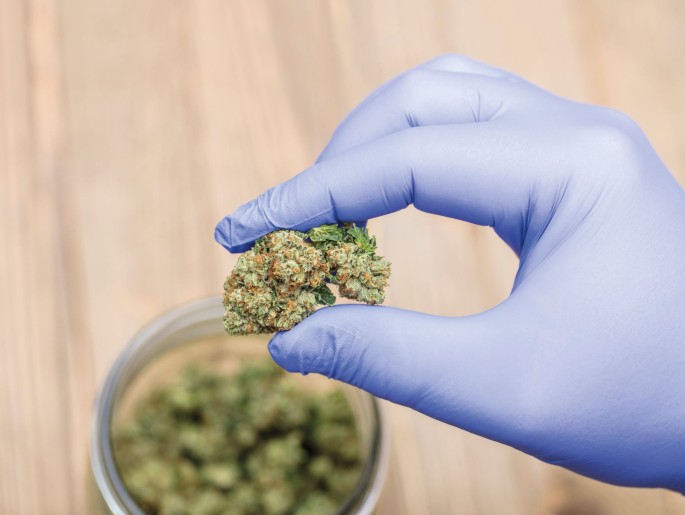CANADA,, DMT, psilocybin
Dreamlike States: Can Cannabis Unlock Hypnagogic Creativity?
Creativity often emerges from unexpected places—the quiet of meditation, the chaos of brainstorming, or the fleeting moments between waking and sleep. This in-between state, known as hypnagogia, has fascinated scientists, artists, and philosophers for centuries. Famous creators like Salvador Dalí and Thomas Edison deliberately tapped into hypnagogic states to spark inspiration. Now, with the growing use of cannabis for both recreational and creative purposes, many wonder: Can cannabis help unlock hypnagogic creativity?
Understanding Hypnagogia
Hypnagogia is the transitional state between wakefulness and sleep. During this phase, the mind drifts in a relaxed yet highly imaginative state, often producing vivid imagery, unusual associations, and bursts of insight. Unlike dreams, which occur during deeper sleep, hypnagogic visions are fleeting and easier to remember if captured immediately.
Psychologists describe hypnagogia as a fertile ground for creativity because:
- The brain shifts into alpha and theta brainwave patterns, fostering relaxation and imagination.
- Logical thinking loosens, allowing unexpected connections to surface.
- Visual and auditory hallucinations can inspire new artistic or problem-solving directions.
It is this unique blend of relaxation and imagination that makes hypnagogia a “sweet spot” for creative exploration.
Cannabis and Consciousness
Cannabis, particularly strains rich in THC, is well-known for altering states of consciousness. Users often report heightened sensory perception, free-flowing thoughts, and an altered sense of time—all qualities that overlap with hypnagogic experiences.
Research suggests that cannabis influences creativity in two main ways:
- Divergent thinking: Cannabis may encourage novel connections between ideas, fostering brainstorming and artistic exploration.
- Relaxation and disinhibition: By quieting self-criticism, cannabis can create a safe space for creative risk-taking.
The overlap between cannabis effects and hypnagogic qualities raises an intriguing question: Could cannabis enhance access to this creative state?
Cannabis as a Gateway to Hypnagogic States
Some cannabis users report experiences similar to hypnagogia, especially during the drowsy phase before sleep. Low to moderate doses may encourage a “dreamlike” mental flow where thoughts become fluid, images emerge spontaneously, and time feels elastic.
- Enhanced imagery: THC can stimulate vivid visualizations that mirror hypnagogic hallucinations.
- Heightened imagination: The loosening of logical boundaries encourages surreal or abstract ideas.
- Access to liminal states: Cannabis may prolong or deepen the transition into sleep, giving more opportunity to linger in hypnagogia.
For artists, writers, and musicians, these effects can provide valuable sparks of inspiration. Cannabis may serve as a bridge, helping them intentionally enter the creative twilight between wake and sleep.
Potential Pitfalls of Cannabis and Creativity
While cannabis can promote creativity, it is not without drawbacks. Hypnagogic creativity is already fragile, and cannabis may sometimes interfere rather than enhance.
- Memory challenges: Cannabis can impair short-term memory, making it harder to recall insights from hypnagogic states.
- Over-sedation: High doses may push users into full sleep, skipping the creative window altogether.
- Scattered focus: For some, cannabis may produce too much mental noise, making it harder to capture useful ideas.
As with many aspects of cannabis use, dosage and individual sensitivity play a crucial role.
Strategies for Unlocking Hypnagogic Creativity with Cannabis
For those curious about combining cannabis and hypnagogia, intention and preparation are essential. Here are some strategies to maximize creative potential:
- Use small doses: Microdosing cannabis may be more effective than heavy use, encouraging relaxation without overwhelming cognition.
- Keep a journal nearby: Record ideas, images, or phrases immediately before they fade from memory.
- Experiment with strains: Indica-dominant strains may encourage drowsiness and vivid imagery, while hybrids can balance creativity with relaxation.
- Practice timing: Consume cannabis shortly before resting or meditating to align with the onset of hypnagogia.
These practices can help channel cannabis’s dreamlike effects into tangible creative outcomes.
The Science of Cannabis, Sleep, and Creativity
Current research on cannabis and creativity is limited, but some studies shed light on its potential role in hypnagogic exploration. THC is known to reduce REM sleep, which could influence dream recall, but its effect on the hypnagogic stage is less understood. Meanwhile, anecdotal evidence suggests that many creatives use cannabis to access looser, more imaginative thought processes.
As scientific interest in cannabis expands, future studies may reveal whether THC, CBD, or other cannabinoids directly affect hypnagogic states and creative output.
Conclusion: Shortcut or Distraction?
Cannabis may not create hypnagogic creativity on its own, but it can act as a facilitator. By relaxing the body, loosening mental barriers, and enhancing imagery, cannabis can help users hover longer in that liminal zone where inspiration often strikes. However, its potential to distract, sedate, or impair memory means it should be approached with balance and mindfulness.
For artists, writers, and innovators, cannabis-assisted hypnagogia offers an intriguing experiment: combining an ancient plant with the timeless mystery of the dreaming mind. Whether it becomes a true shortcut to creativity or merely an interesting detour depends on the individual, the dose, and the discipline of capturing fleeting ideas before they vanish.


